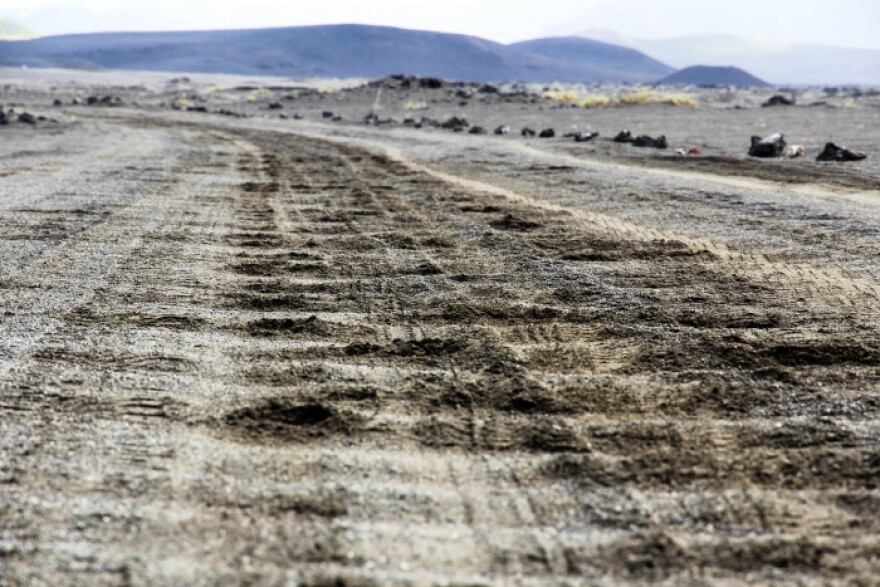KNAU commentator Scott Thybony has driven countless miles of dirt road in his quest to track down stories and adventures. His curiosity often lures him down some of Arizona's worst washboard roads. In this month's Canyon Commentary, Thybony waxes poetic - and mathematical - about the power of a rough dirt road.
A simple oversight turned into a serious mistake when I found myself a hundred miles down a dirt road with a flat tire and only an undersize spare. The trip began when a novelist got into a bind. He needed to find a way of reaching the end of the Shivwits Plateau to write an accurate description of the landscape for a key scene in his book. I agreed to take him, and in my hurry to leave town forgot the extra tire I normally carried on backroads.
A friend and I met the writer in St. George, and we headed south toward the Grand Canyon on a road that soon turned to dirt. We made good time as I kept my speed up on the washboarded sections. I knew from experience the need to drive at an optimal speed to float across the rippled surface. Go too slow and you slam into each ridge, too fast and you risk fishtailing and losing control. Ranchers can talk at length about the particulars of washboard roads. That's no surprise. But the serious attention given to it by physicists is another matter. They describe the effect in terms of "transverse oscillations" and compare it mathematically to a stone skipping over water. One scientist used second-order differential equations to conclude what a Navajo once told me: "Go at the speed at which they were formed," he said.

The farther out on the Shivwits Plateau you go the wilder it gets, and we hadn't seen anyone on the road since leaving town. When the ruts deepened, I stopped to lock in the hubs and proceeded in four-wheel drive. Then it got rough. For about 25 miles we crossed a boulder-choked stretch known as the Tank Trap, which forced me to drive slower than a person could walk. Once beyond the worst of it we continued south where the arm of the plateau reached deep into the heart of the great canyon.
At the far end of the Shivwits we stopped to inspect the spot where three men from John Wesley Powell's 1869 expedition left the river and climbed to the rim to meet an uncertain fate. The novelist jotted down a few notes before walking back to the truck, mission accomplished. I hadn't driven far on the return trip when a hissing came from the rear - the familiar sound of a tire going flat, and not unexpected considering the condition of the road. What came as a surprise was to discover I had left behind the full-size spare. All I had was the doughnut, an emergency spare designed to get you a few miles down the road to the next gas station. We now faced 100 rough miles, and a long walk back to town if the tire didn't hold up.

The miles spooled out, and every one we covered felt like a gift. Expecting a blowout at any moment, I nursed it through the Tank Trap, easing over one dragon-tooth rock after another. Then the road improved, and where vehicles could pick up speed the rippling increased. On the rattleboard stretches I let the truck skip across the ridges to minimize impact on the spare. Finally reaching pavement, I relaxed my grip on the steering wheel and looked for a place to get it patched. In the interest of authenticity I thought the novelist might have preferred to walk out like Powell's men. But he was content to have made it back on four tires. Actually, more like three-and-a-half.
Scott Thybony is a Flagstaff-based writer. His Canyon Commentaries are produced by KNAU, Arizona Public Radio.



